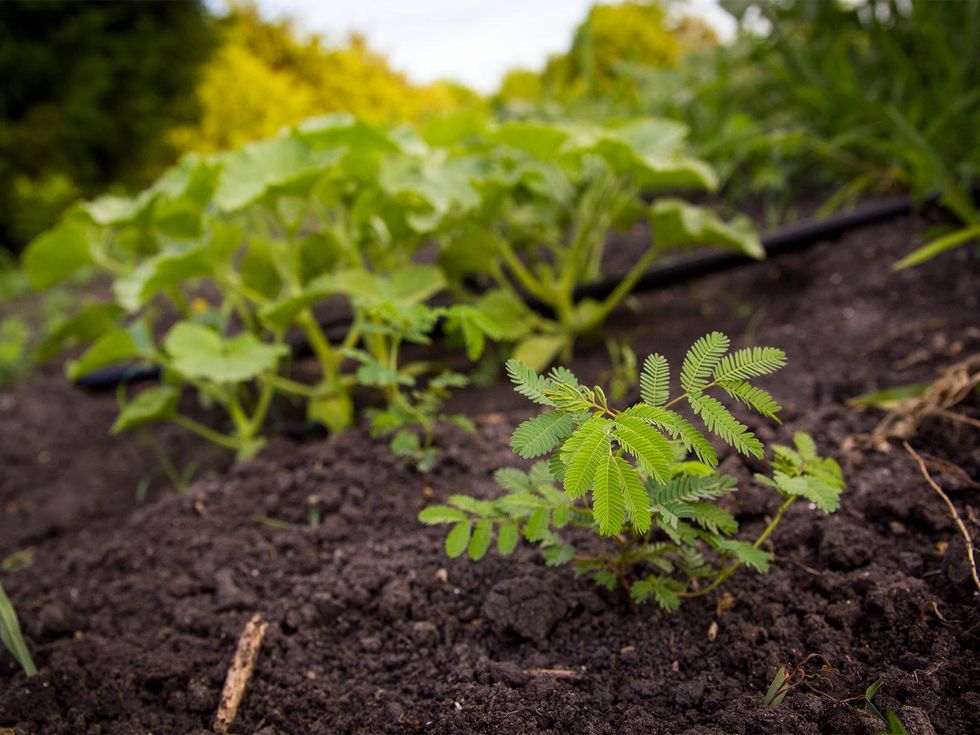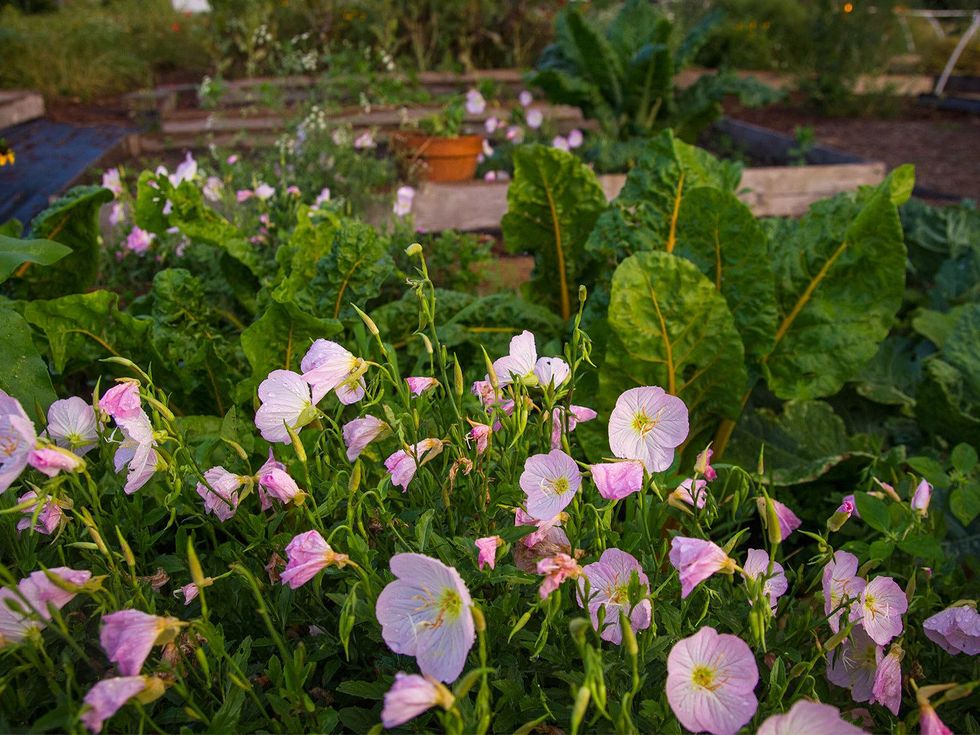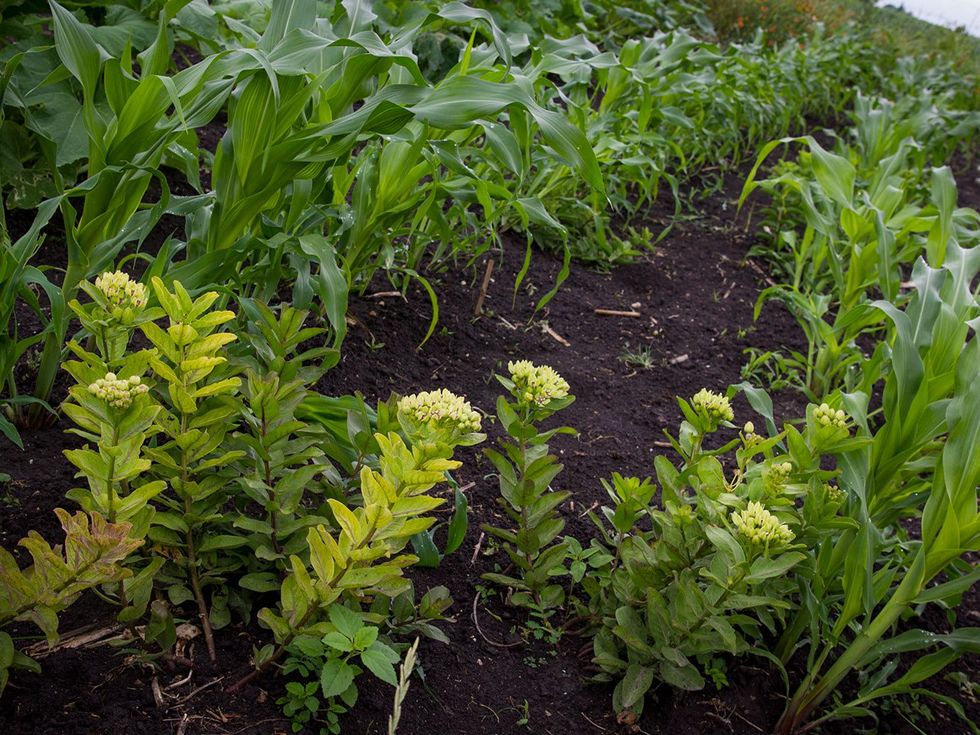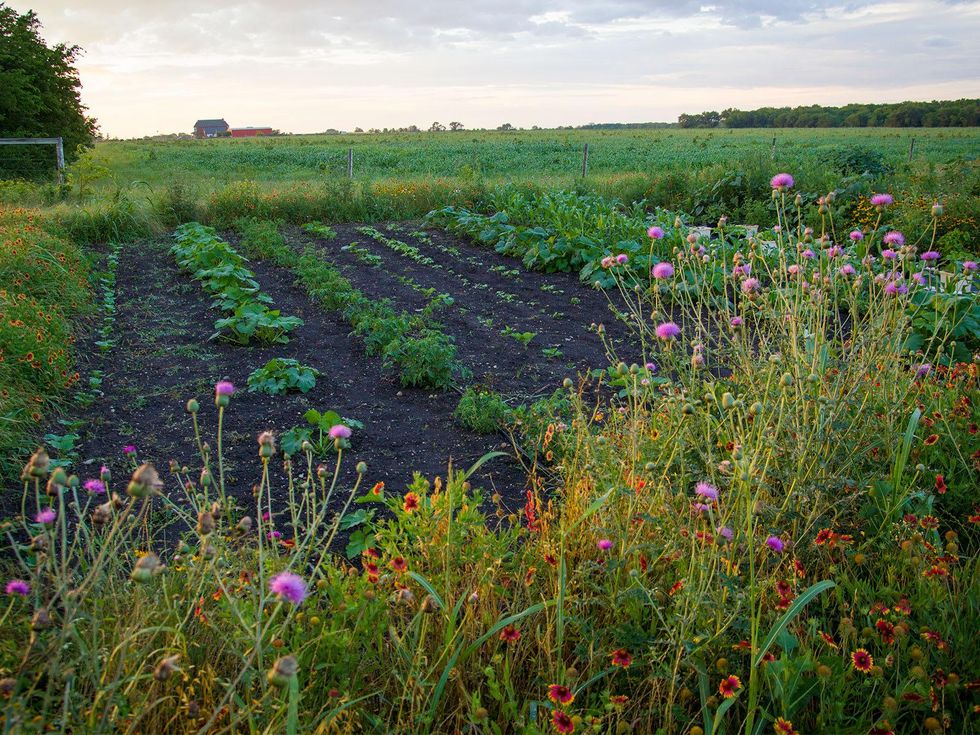The Farmer Diaries
Texas farmer proclaims 5 reasons why weeds can be good for your garden
Each year by summertime, my field and raised bed garden become overgrown with weeds. The grasses and vines that seem to pop up everywhere after a good rain compete with my food crops, reducing the amount of fruits and veggies I can expect to harvest. To remedy this, I must spend several hours each day pulling them up by the roots and tossing them out where they can't reestablish themselves.
But despite my urge to make my fields look like the sterile rows of herbicide-laden corn I see growing nearby, total weed eradication should not be my goal if I want to grow my own food sustainably. There are several reasons not to lay waste to all the non-food flora that takes root in my garden.
Feeding the bees
Many of the weeds that infiltrate my garden are simply native wildflowers. Before they bloom, it's difficult to know that they'll one day be beautiful Indian blanket flowers, Maxmillian sunflowers or any other specimen listed in the Lady Bird Johnson Wildflower Center's database.
Aside from their obvious beauty, their flowers habituate butterflies and bees to the area where my food crops grow, ensuring that when my squash, melons and fruit trees bloom, they're thoroughly pollinated, right away. By allowing wildflowers to grow around the perimeter, I've seen countless bumblebees, swallowtail butterflies and honey bees working from sun up to sundown, gathering nectar and flying from flower to flower. The garden is as much theirs as it is mine.
Pest subterfuge
It might seem that weeds harbor pests, and those pests would then eat crops, but I've found the opposite to be true in many instances. Whenever I directly sow the seed of a delicate plant in a raised bed, the sprouts that germinate in isolation seem to be the ones that fall victim to pestilent predators first.
The sprouts that germinate among native plants seem to blend in a little better while not attracting the attention of whatever hungry bug is near. There's also more for them to eat, so the chances of a pest taking a direct route to gorge itself on my new sprouts are slim.
Soil improvement
One might make an assumption that weeds rob soil of nutrients. But if this were true, industrial farmers who've wiped out all the native plants from the land would not need to spend thousands of dollars to pump their soil full of chemical, high-nitrogen fertilizers every year.
Such an expense seems pointless when you consider that native legumes such as bluebonnets and bundleflower host bacteria in their roots that take nitrogen from the air and fix it to the soil where it can be taken up by plants, free of charge.
Another example of how weeds benefit improve soil fertility can be seen in non-native dandelions. Along with a few other weeds with long taproots, dandelions grow deep into the soil, tapping into buried sources of essential plant minerals and concentrating them in their leaves and stems.
When they die back at the end of the year, those minerals are released into the upper level of the surrounding soil, where they become available to food crops with shallower root systems. Additionally, the long taproots aerate the soil and alleviate soil compaction that hinders root development in crops.
Drought tolerance
Weeds grow well, on their own with no supplemental water. They therefore effortlessly shade the soil from the heat of the sun, keeping soil temperature lower and reducing the rate of moisture evaporation.
Cooler, moister soil in turn harbors more beneficial microorganisms that improve soil fertility and keep soil-borne diseases under control.
Erosion control
Flooding rainfall moves loose soil particles downstream, and heavy winds blow dry soil into the air and far away. The land I farm was purchased by my parents back in the '70s. It sits several feet higher than the land across the road.
Both plots were farmland at the time of the purchase, and they were at the same elevation. The difference: My family's land was allowed to repopulate with wildflowers and weeds, while the plot across the road continued to be farmed for three more decades. Little by little every year, the bare land across the road has washed away with every rain or blown away with every plowing.
The plan
I must remove the weeds that interfere with my crops. Johnsongrass, bindweed and several varieties of invasive plants are on my list to be destroyed. But I don't feel as compelled to weed out every last trace of non-food plants.
In my field of Israeli melons, I'm allowing bundleweed to grow along with my melon vines. I'm thinning out but not eradicating the native sunflowers that have cropped up; their seeds will feed wild birds throughout the winter.
Around the perimeter of the melon field and my raised bed garden, I'm allowing Indian blanket, Texas yellowstar and purple thistle, along with a few other wildflowers, to go to seed before I mow everything down. Milkweed I treat like a sacred artifact. Wherever it grows, it grows free of harassment so that monarch butterflies have a slightly improved chance of dodging imminent extinction.
To anyone who drives by my experiment in sustainable food production, my weedy acreage must seem like a failure. What's not obvious from a car window is that my crops are the major part almost every meal that I eat, year-round.





